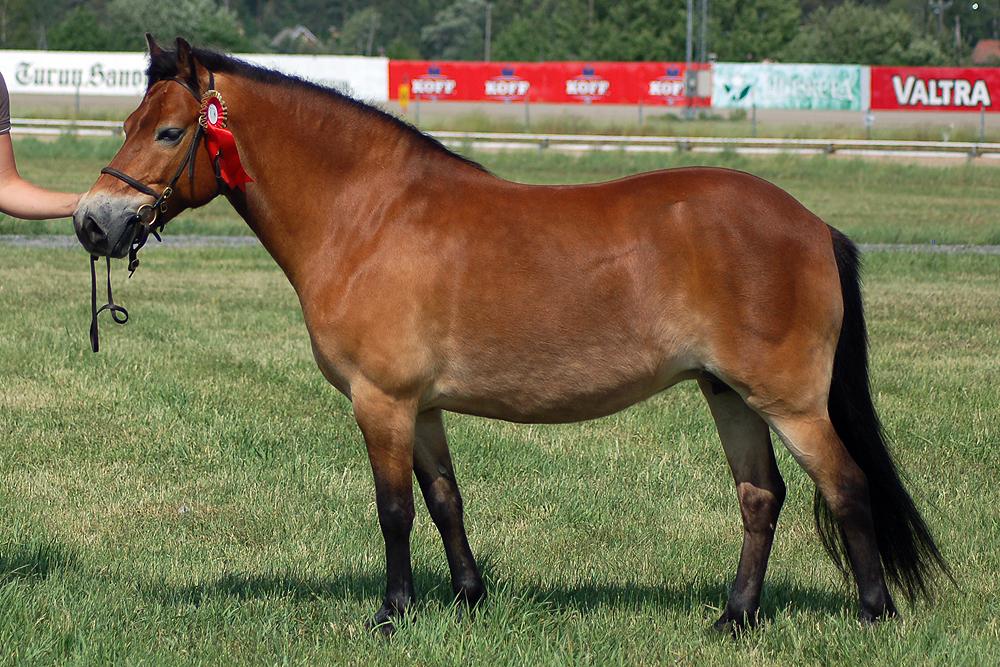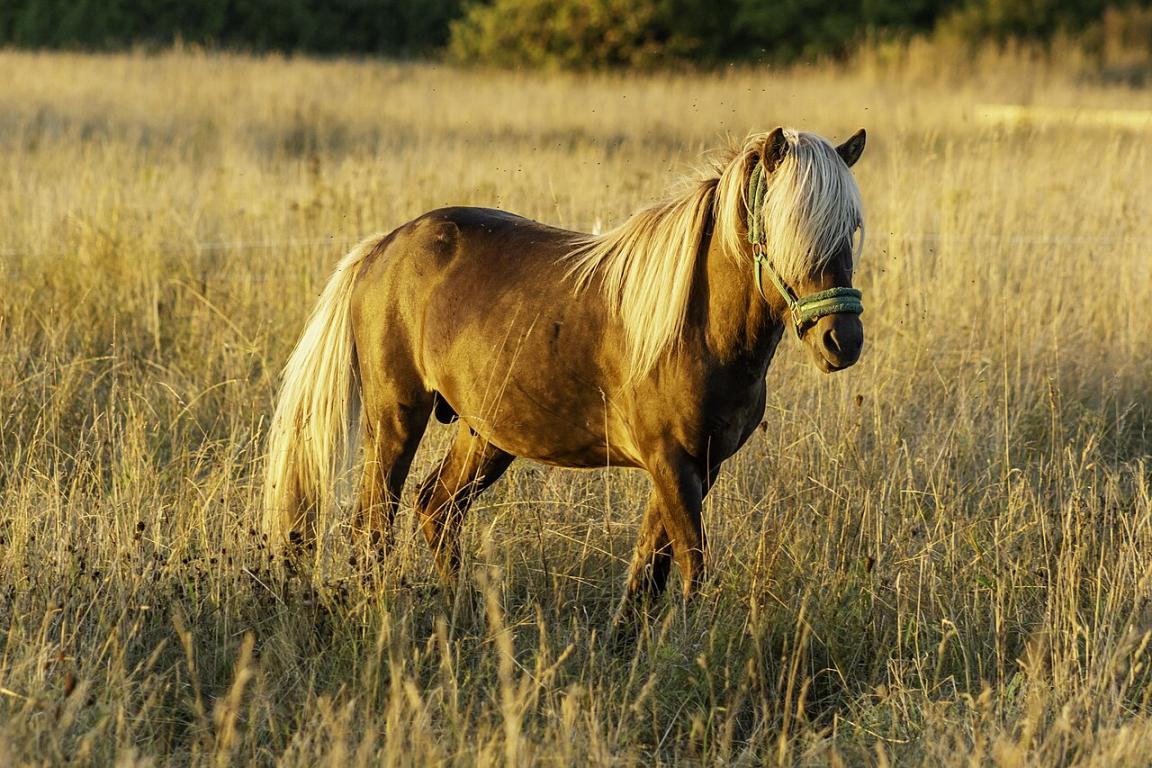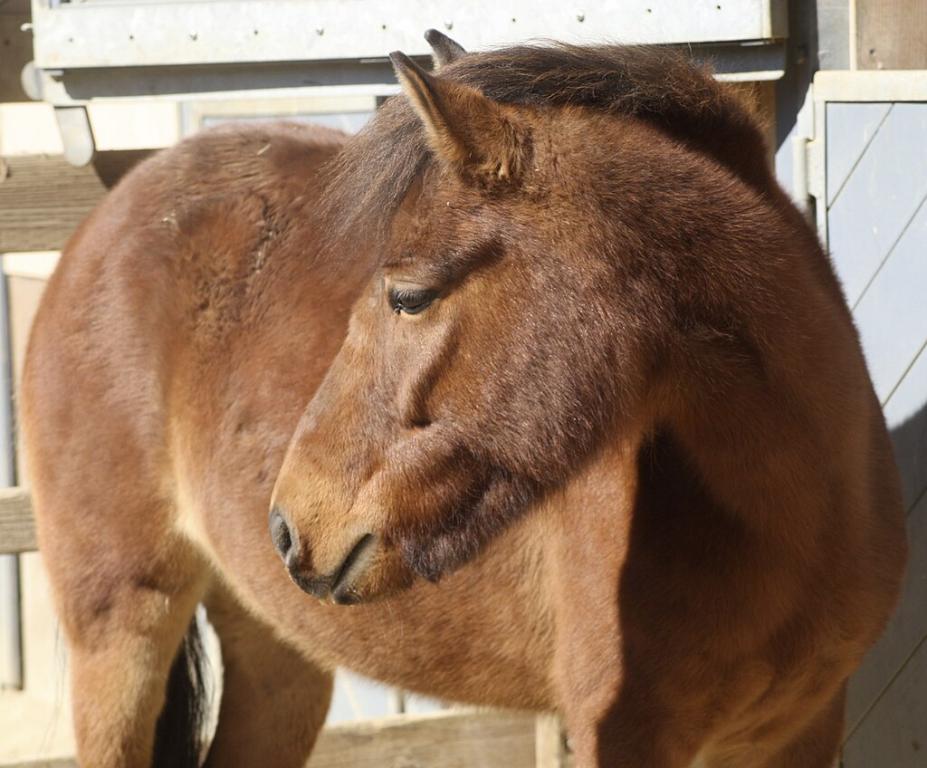
Continent: Europe
Country: Sweden
Weight: 250 – 350 kg
Height: 117 – 130 cm


The Gotland Pony originates from the island of Gotland, in the Baltic Sea, off the Swedish coast. It is one of the oldest equine breeds in Northern Europe, with roots dating back to prehistoric Scandinavia. Remains of horses similar to the Gotlandsruss have been found at archaeological sites from the Bronze and Iron Ages.
Culturally, the Gotlandsruss was long considered a semi-wild pony, living freely in the moors and forests of the island. It played a vital role in agricultural work, transportation, and the daily life of the island’s inhabitants. Regarded as a Swedish heritage symbol, it is closely tied to Gotland’s rural identity.
Today, its preservation is seen as both a cultural and ecological act, emphasizing the importance of maintaining ancient Nordic equine lineages in their native environment.
Main area:
- The island of Gotland, in Sweden, remains the birthplace and central hub of traditional Gotlandsruss breeding, particularly in the nature reserves of Lojsta Hed, where a population still lives in semi-feral conditions.
Other breeding areas in Sweden:
- The breed is also raised on the Swedish mainland, especially in the regions of Svealand and Götaland, where it is valued for children’s riding and driving.
Abroad:
- Small breeding populations exist in Finland, Norway, Denmark, Germany, and the Netherlands, often within heritage or educational programs.
The breed is mainly raised in extensive or semi-natural systems, encouraging selection for hardiness, feed autonomy, and good temperament.
The Gotlandsruss holds significant genetic importance as one of the oldest surviving European pony breeds, preserved in relative geographical isolation. It represents a primitive Nordic type, close to the ancestor of the European pony, with genetic traits of hardiness, frugality, and resistance to harsh climates.
Its genetic diversity is valuable for research in the conservation of local breeds and for the genetic improvement of hardy ponies. It has contributed to the development or enhancement of several small horse breeds, particularly in Nordic and Baltic countries.
Furthermore, the Gotlandsruss serves as a model for semi-wild conservation programs, illustrating the interaction between breeding, ecological land management, and heritage protection.
The Gotlandsruss is one of the oldest ponies in Europe, with origins dating back to Nordic prehistory. Archaeological remains found on the island of Gotland show the presence of small horses as early as the Bronze Age (around 1000 BCE). These horses lived in semi-wild conditions and were used by the local populations for agricultural work and transport.
Over the centuries, the Gotland pony retained its primitive traits, thanks to the isolation of the island and natural selection based on hardiness, cold resistance, and frugality. It lived for a long time in semi-freedom in forests and pastures, especially in the Lojsta Hed region, where a feral population still exists today.
At the end of the 19th century, the breed nearly disappeared due to mechanization, inbreeding, and uncontrolled crossbreeding. To save it, a conservation program was launched in the 1920s, with the controlled introduction of outside blood (notably Shetland) to widen the genetic base.
The official stud-book was created in 1943 with the founding of the Svenska Russavelsföreningen, in order to standardize and promote the breeding of the Gotlandsruss. Since then, the breed has been raised under strict supervision, especially in protected areas, and is recognized as a Swedish heritage breed.
Today, it symbolizes both the Swedish rural cultural heritage, the resilience of Nordic breeds, and the importance of genetic conservation of native equine populations.
The Gotlandsruss is known for its balanced temperament, intelligence, and liveliness. It combines key qualities ideal for a leisure or driving pony:
- Lively and energetic, without being nervous, it is highly responsive and dynamic when working.
- Intelligent and curious, it learns quickly and responds well to consistent training.
- Willing and cooperative, it develops a strong bond of trust with its handler.
- Resilient and adaptable, it copes well with harsh conditions, both in terms of climate and nutrition.
- Sociable, it gets along well with other horses and with humans, especially when handled from a young age.
- Independent but not stubborn, it can sometimes be clever or test boundaries, making it an excellent pony for riders with some experience or those under proper supervision.
The Gotlandsruss is increasingly valued for its ability to serve as an extensive grazing animal, contributing to the conservation of natural habitats (moorlands, forests) while respecting equine welfare.
Studies confirm that these ponies maintain good physical condition on extensive pasture systems with little or no supplementary feeding, though certain winter periods or specific individuals (especially mares) may require additional nutrition.
Conservation efforts still rely heavily on committed private breeders, often volunteers. Financial support or practical applications (such as rural tourism, animal-assisted therapy, or ecosystem services) could enhance sustainability.
The breed remains listed among the endangered Nordic breeds, with approximately 6,000 to 8,000 individuals worldwide, most of them in Sweden. The international population is still small, but growing, particularly in the USA and continental Europe.
Today, the Gotlandsruss has promising prospects, thanks to innovative genetic research programs, increased recognition of its ecological and social value, and a sufficient population base to maintain genetic diversity. However, its long-term viability depends on the alignment of scientific research, conservation policies, and the development of sustainable, economically viable uses.
The Gotlandsruss is recognized for its natural hardiness and longevity, inherited from centuries of selection in harsh climatic conditions. Overall, it displays excellent health, with few predispositions to serious genetic diseases.
Strengths:
- Excellent resistance to common illnesses, especially respiratory and digestive issues.
- Very hard and well-shaped hooves, often suitable for use without shoes.
- High fertility, in both mares and stallions.
- Easy foaling and good maternal instincts.
Watchpoints:
- Tendency to become overweight if fed too richly, especially when on pasture.
- Sensitivity to laminitis in cases of overfeeding or overly rich grazing.
- Requires careful winter management for semi-feral ponies (feeding, natural shelter).
In summary, the Gotlandsruss is a rustic, low-maintenance pony, and generally resistant to illness, provided it is kept on a frugal diet suited to its primitive metabolism.
Born on 01/01/1940
One of the most influential sires in the modernization of the Gotlandsruss after the stud-book was established in 1943. He played a key role in consolidating the current bloodlines.
- Origin: From the semi-feral population of Lojsta Hed.
Born on 01/01/1950
- Role: Pillar of the modern breed
Widely used as a stallion in continental Sweden during the 1960s–70s. Many current ponies descend from him.
- Progeny: High transmission rate of temperament and conformation traits.
Born on 01/01/1957
- Country: United States
- Importance: First Gotlandsruss born in the U.S. (1957), following the importation of the mare Flicka and the stallion Lill-Klas.
- Role: Founder of the American Gotlandsruss population.
Bred at Kokovoko Breeding Farm, a pioneer in the development of the breed in North America.